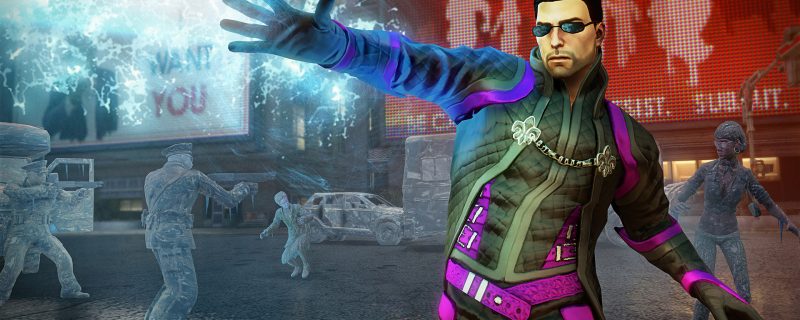
Censorship has often been a necessary evil for a pioneering gaming industry driven by young, brash developers, keen tell a story, make a point, or simply out to shock.
Some content is simply misguided or misjudged: early games featuring images of Hitler or Nazi troops have often been censored – not least in Germany where such imagery is banned in video games even today.
German releases often feature killer robots that die in a shower of sparks, rather than stormtroopers and a shower of blood. One of the earliest titles to get a German makeover was Bionic Commando, released in Japan as Top Secret: The Resurrection of Hitler. The Führer became a horned demon while swastikas were swapped for eagle insignia. World War II sensitivities were preserved, although few people would be fooled as to the true intent of the game.
For decades, Nintendo has been famously self-censoring its games, removing blood and gore from beat ’em ups and shooters to protect its family-friendly image.
Vodka Drunkenski, you’re banned!
This ranged from changing the name of alcohol-swilling Punch Out!!! character Vodka Drunkenski (shown in the video above) to Soda Popinski, to the covering up of naked statues in Super Castlevania IV. But Nintendo’s actions were at their most egregious when the blockbuster one-on-one fighter Mortal Kombat appeared on the SNES in 1992. As you can see in the next video, all of the blood and gore was excised, including the signature ‘fatalities’.
When the uncensored Sega Genesis version outsold the SNES, Nintendo suddenly found reason to relax its policy for Mortal Kombat II, which features violence, blood and gore in copious amounts.
Violent games always risk censorship, but the psychological horror stealth game Manhunt 2 proved too extreme even for current certification. The game was given Adults Only status in the US and refused any certification in the UK and Ireland. To get the title passed, Rockstar Games censored its own content, blurring out scenes of grisly executions and removing the score awarded for brutality.
Eventually the game was given an M rating in the US and an 18 in the UK, but was banned from sale in Germany, Ireland, New Zealand, Kuwait, Saudi Arabia and South Korea.
Just say ‘no’ to alien drugs
Indeed, censorship varies radically from territory to by territory. Japan’s Computer Entertainment Rating Organization enforces the removal of blood or presents it in another colour (often black but sometimes blue or green). Australia, meanwhile, has strict rules on nudity, violence and the use of illegal substances. In Saints Row IV, a mission in which characters pop alien drugs to gain improved physical abilities was excised completely.
One of the more contentious issues with censoring is where the governing body deems itself able to make decisions on the player’s behalf, some of which may seem pointless or petty. When the creators of TV show South Park released the Stick of Truth in 2014, the game faced cuts in Europe and Australia while the US release went uncensored.
Even Football Manager has been banned
To be assured of a PEGI 18 certificate, 40 seconds of scenes involving anal probing and male abortion had to be edited out – even though the TV show has featured the same material (and far worse). The comic nature of the game meant the developers could make a joke of it, but many gamers in Europe failed to see the funny side of what was perceived as the increasing involvement of the ‘nanny state’.
Censorship because of cultural differences is also a constant source of annoyance to hardcore gamers. Football Manager 2005 was banned in China for recognising Taiwan and Tibet as independent countries. The Witcher 3 was initially banned in Australia for its sexual content.
Japanese titles also fall foul of the censors. Western video game translations are often accompanied by subtle visual changes to bring titles in line with perceived Western tastes and values. The Japanese are known for their relaxed attitude to overt sexualisation of female characters, which also extends to under-age characters.
The unrealistic representation of women
As an example, the 2015 release Xenoblade Chronicles X has the option to dress your 13-year-old companion Lin in a skimpy bikini, and even adjust the size of the player character’s breasts. This option has been removed from the Western release, incensing a section of the fan base that feel it impinges on the artistic integrity of the game and the original creative choices.
Indeed, the disparity between Eastern and Western tastes regularly prevents Japanese developers from bothering to make the effort in producing translations.
Earlier this year Koei Tecmo announced that it wouldn’t be launching Dead or Alive Xtreme 3: Fortune outside core Asian markets. This offshoot of the Dead or Alive fighting game series features its female combatants playing volleyball, clad in skimpy bikinis and with unrealistically bouncing breasts. Although fans were upset, with the ongoing discussion about representation of women in videogames, it’s no surprise that Koei Tecmo has decided to simply avoid any confrontation and keep its Japanese audience-friendly game at home.
Some developers, however, will continue pushing at the boundaries of taste. Somewill be controversial, others poorly judged. As the visuals in games become more realistic and as more people play, the questions remain the same. Where do we draw the line and is that line in the right place?
















